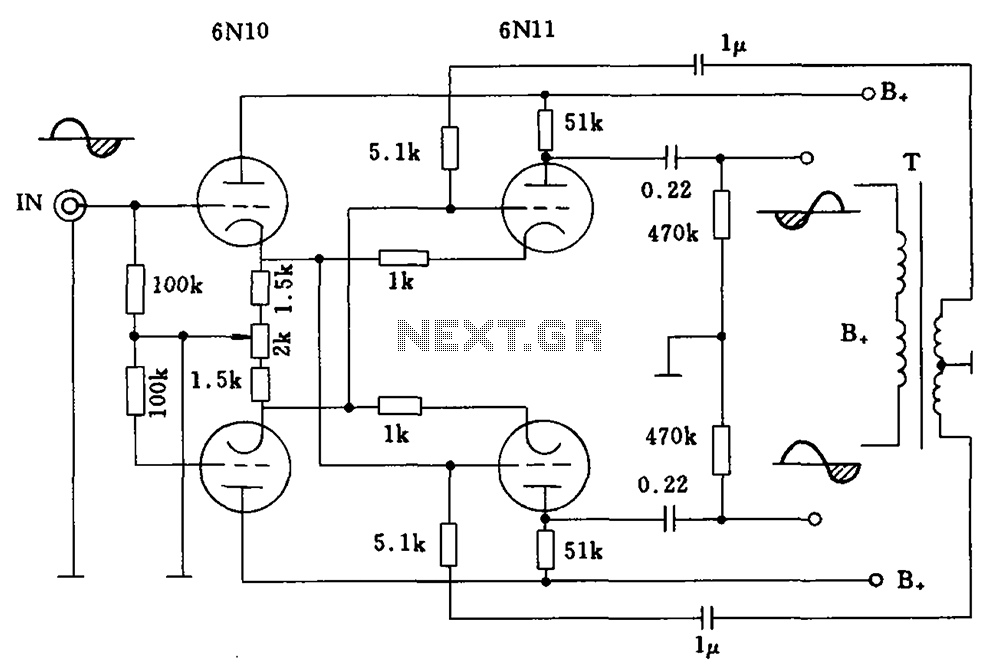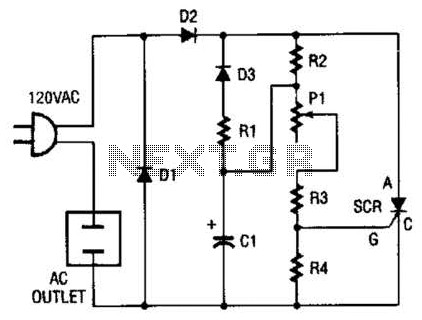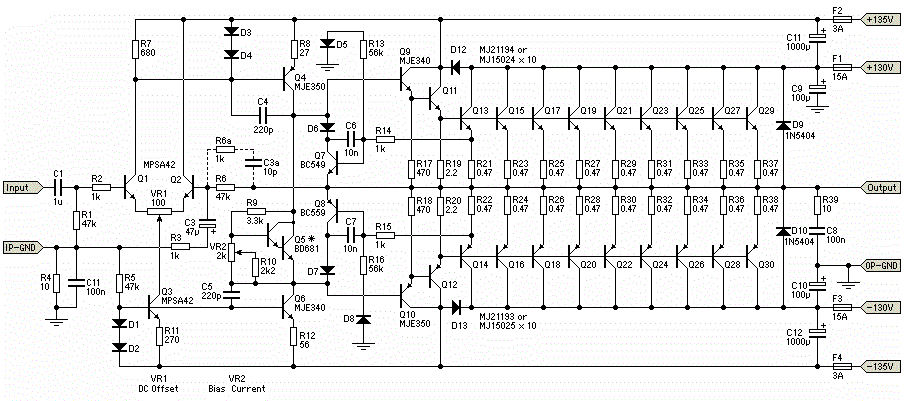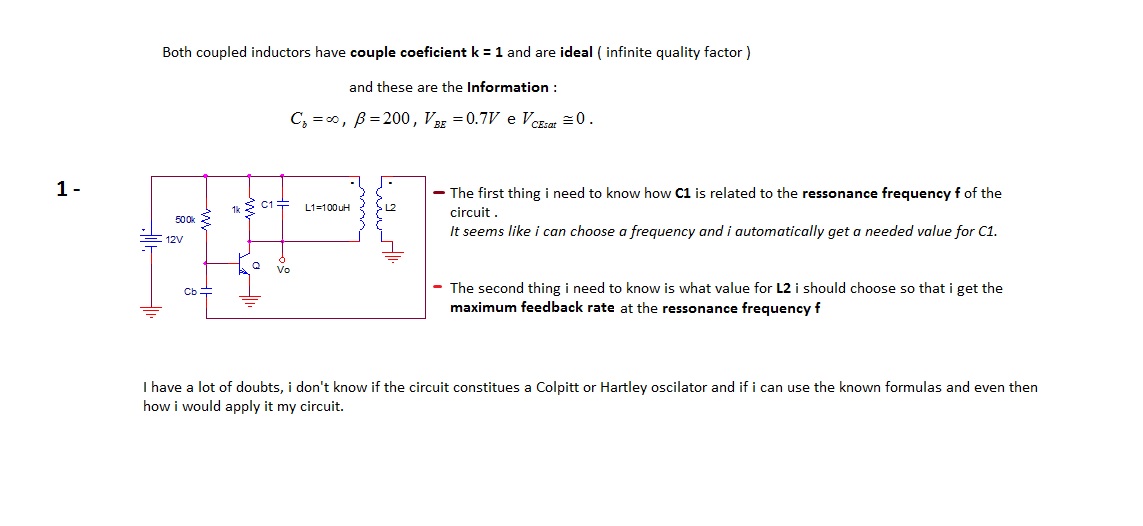
CF1 CF2 main circuit
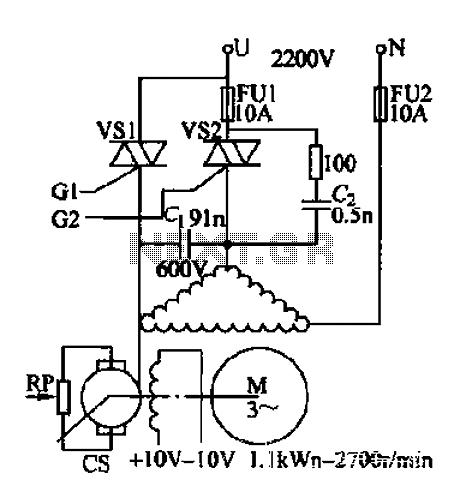
AC voltage is rectified by a bridge (VD1-VD4). A resistor (R1) limits the buck, while diode (VD5) provides clipping. A trapezoidal wave is generated as the trigger circuit for DC voltage and synchronization. When the base of transistor (VT1) receives forward voltage from potentiometer (RP1), it turns on, directly coupling the collector to the base of transistor (VT2). VT2 acts as a variable resistor to change the charging time constant of capacitor (C3). When VT2 is conducting, its collector charges capacitor C3. When the charging voltage (Uc) reaches the peak voltage of the single-junction transistor, the emitter current of transistor (VT3) sharply increases, causing a rapid discharge of capacitor C3 through resistor (R3). This results in a sharp pulse output at the collector of VT3. Because the output pulse amplitude is small, transistor (VT4) amplifies the pulse through a transformer output connected to the gate (G) and cathode (K) of thyristor (VS1), triggering conduction when the voltage (Ue) is less than the peak voltage (up). The circuit controls the main circuit and the relay control circuit for a single-phase AC power supply of 220V. After phase shifting through capacitor (C1), it operates three-phase asynchronous motors.
The described circuit primarily functions as a power control mechanism for three-phase asynchronous motors using a single-phase AC supply. The initial AC voltage is rectified by a bridge rectifier composed of diodes VD1 to VD4, converting it into pulsating DC. Resistor R1 limits the current to ensure that the system operates within safe limits. Diode VD5 serves to clip any excessive voltage spikes, protecting the circuit from potential damage.
The trapezoidal wave generated in the circuit acts as a synchronization signal for the subsequent operation of the transistors. When a forward bias is applied to the base of VT1, it activates the transistor, allowing current to flow from the collector to the base of VT2. This setup enables VT2 to function as a variable resistor, allowing adjustments to the charging time constant of capacitor C3, which is crucial for timing control in the circuit.
As C3 charges, the voltage across it increases until it reaches a threshold where it can trigger VT3. The rapid increase in emitter current at VT3 leads to a quick discharge of C3 through R3, generating a sharp pulse output. This pulse, while initially small in amplitude, is amplified by VT4 to ensure it is sufficient to trigger the thyristor (VS1) for controlling the main load.
The use of a transformer in conjunction with VT4 allows for isolation and amplification of the pulse signal, ensuring reliable operation of the thyristor. The thyristor VS1, when triggered, controls the AC supply to the three-phase motors, allowing for efficient operation and control of motor speed and torque.
Capacitor C1 plays a critical role in phase shifting, which is essential for the operation of three-phase motors. The combination of resistive and capacitive elements in the circuit provides necessary protection and ensures stable operation under varying load conditions. The design also incorporates series resistance for additional protection, making the circuit robust against transient conditions.
Overall, this circuit exemplifies a well-structured approach to controlling AC motors using precise timing and synchronization techniques, enhancing the performance and reliability of industrial motor applications.AC voltage is rectified by a bridge (VD1-VD4). 3R1 limiting buck, VD5 clipping, a trapezoidal wave as the trigger circuit DC voltage and synchronization. When VT1 base of RP1 r eceived forward voltage is turned on, a collector coupled directly VTZ base, VT2 play a variable resistance action to change the 3cl capacitor charging time constant. When VT2 Yuetong, its collector to 3 cl charging, when charging voltage Uc Up (single-junction transistor peak voltage), VT3s e, resistance between bl sharp decline, while turned ON, the emitter current increase suddenly increase, 3G capacitive discharge by 3Ra, the VT3s bl have a sharp pulse output.
Since bl output pulse amplitude is too small, the VT4 amplification by Mr pulse transformer output - connected to the VS1 G and K, triggering VS1 conduction, when Ue
The described circuit primarily functions as a power control mechanism for three-phase asynchronous motors using a single-phase AC supply. The initial AC voltage is rectified by a bridge rectifier composed of diodes VD1 to VD4, converting it into pulsating DC. Resistor R1 limits the current to ensure that the system operates within safe limits. Diode VD5 serves to clip any excessive voltage spikes, protecting the circuit from potential damage.
The trapezoidal wave generated in the circuit acts as a synchronization signal for the subsequent operation of the transistors. When a forward bias is applied to the base of VT1, it activates the transistor, allowing current to flow from the collector to the base of VT2. This setup enables VT2 to function as a variable resistor, allowing adjustments to the charging time constant of capacitor C3, which is crucial for timing control in the circuit.
As C3 charges, the voltage across it increases until it reaches a threshold where it can trigger VT3. The rapid increase in emitter current at VT3 leads to a quick discharge of C3 through R3, generating a sharp pulse output. This pulse, while initially small in amplitude, is amplified by VT4 to ensure it is sufficient to trigger the thyristor (VS1) for controlling the main load.
The use of a transformer in conjunction with VT4 allows for isolation and amplification of the pulse signal, ensuring reliable operation of the thyristor. The thyristor VS1, when triggered, controls the AC supply to the three-phase motors, allowing for efficient operation and control of motor speed and torque.
Capacitor C1 plays a critical role in phase shifting, which is essential for the operation of three-phase motors. The combination of resistive and capacitive elements in the circuit provides necessary protection and ensures stable operation under varying load conditions. The design also incorporates series resistance for additional protection, making the circuit robust against transient conditions.
Overall, this circuit exemplifies a well-structured approach to controlling AC motors using precise timing and synchronization techniques, enhancing the performance and reliability of industrial motor applications.AC voltage is rectified by a bridge (VD1-VD4). 3R1 limiting buck, VD5 clipping, a trapezoidal wave as the trigger circuit DC voltage and synchronization. When VT1 base of RP1 r eceived forward voltage is turned on, a collector coupled directly VTZ base, VT2 play a variable resistance action to change the 3cl capacitor charging time constant. When VT2 Yuetong, its collector to 3 cl charging, when charging voltage Uc Up (single-junction transistor peak voltage), VT3s e, resistance between bl sharp decline, while turned ON, the emitter current increase suddenly increase, 3G capacitive discharge by 3Ra, the VT3s bl have a sharp pulse output.
Since bl output pulse amplitude is too small, the VT4 amplification by Mr pulse transformer output - connected to the VS1 G and K, triggering VS1 conduction, when Ue
